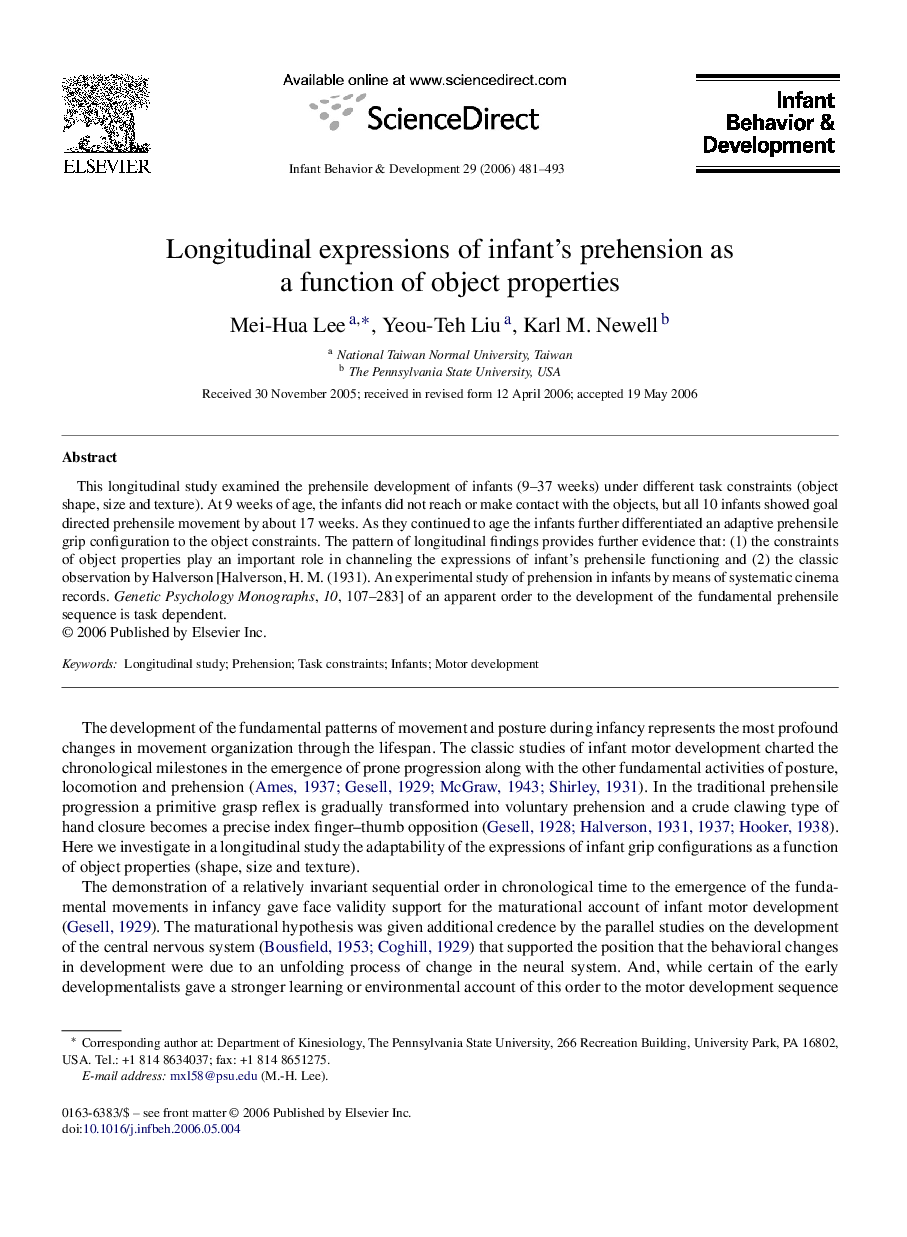| Article ID | Journal | Published Year | Pages | File Type |
|---|---|---|---|---|
| 917644 | Infant Behavior and Development | 2006 | 13 Pages |
This longitudinal study examined the prehensile development of infants (9–37 weeks) under different task constraints (object shape, size and texture). At 9 weeks of age, the infants did not reach or make contact with the objects, but all 10 infants showed goal directed prehensile movement by about 17 weeks. As they continued to age the infants further differentiated an adaptive prehensile grip configuration to the object constraints. The pattern of longitudinal findings provides further evidence that: (1) the constraints of object properties play an important role in channeling the expressions of infant's prehensile functioning and (2) the classic observation by Halverson [Halverson, H. M. (1931). An experimental study of prehension in infants by means of systematic cinema records. Genetic Psychology Monographs, 10, 107–283] of an apparent order to the development of the fundamental prehensile sequence is task dependent.
